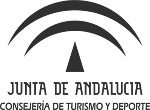Comparison of electromyographic activity of core muscles in the bridge exercise with bosu
Abstract
Objective: To analyze and compare the electromyographic activity of the rectus abdominus, external oblique, internal oblique, erector spinae and multífido muscles in the bridge exercise with an unstable surface: normal and inverted bosu, for 45 seconds of isometric contraction.
Method: Fifteen volunteers, young, healthy and physically active adults (21.73 ± 1.31 years, height 177.10 ± 3.90 cm, 74.27 ± 5.38 kg, and 10.97 ± 1.60% Body Fat), with no history of low back pain. The electromyographic signal was analyzed in three different steps in each exercise: start (STAGE A: 5 and 10 seconds), middle (STAGE B: 20 and 25 seconds) and end (STAGE C: 40 and 45 seconds). Simple differential surface electrodes with 20-fold gain were used and the signal was analyzed in the temporal domain and normalized by the maximum voluntary isometric contraction. In the statistical treatment, the Shapiro Wilk test and two-way ANOVA, with Sidak post hoc test (p <0.05) were applied to the electromyographic signal of each muscle.
Results: There were significant differences between phases for all muscles, with emphasis on rectus abdominus and external oblique in phases B and C and a significant interaction between exercise and phase for all muscles. normal and inverted bosu demonstrated similarity in electromyographic activity for all muscles, but at different stages (C and B / C, respectively).
Conclusion: Due to the similarity of electromyographic activity, the choice of using normal or inverted bosu does not differ for trained individuals, however, choosing a 45-second time is an interesting strategy to increase the electromyographic activity of core muscles and to work resistance to muscle fatigue, essential factors for the prevention of low back pain.


